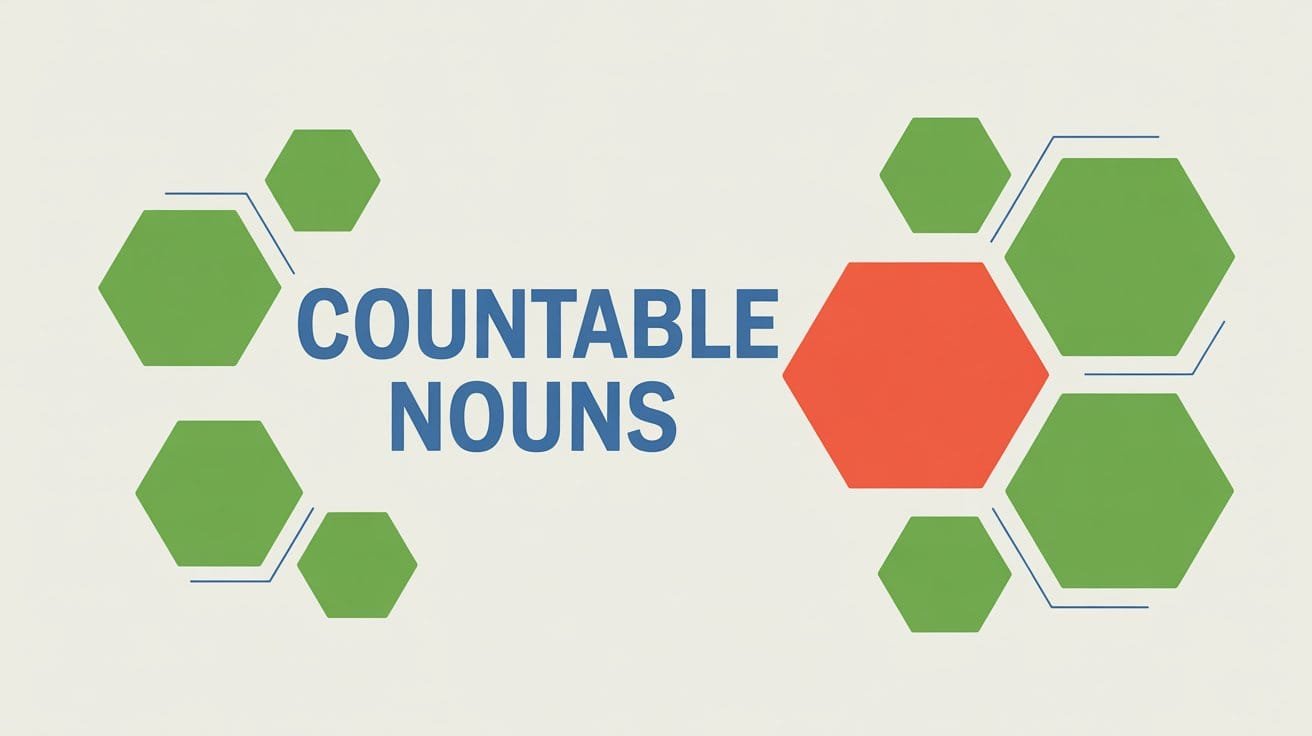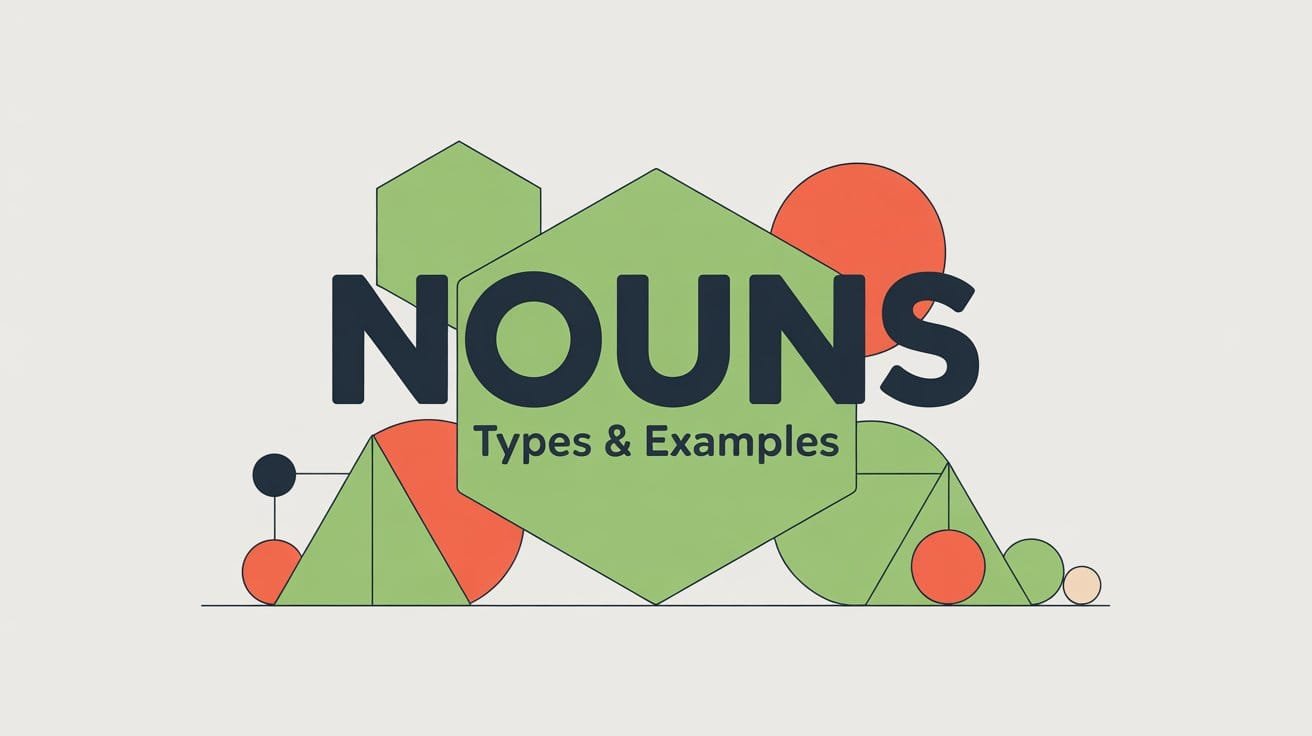A countable noun is any noun that has both a singular and a plural form. You can use numbers with it, add “a” or “an” before it, and say things like one chair, three pencils, or many students.
In this guide, you’ll learn what countable nouns are, how they work in sentences, how they differ from uncountable nouns, and how to use them correctly in writing and speaking.
What Is a Countable Noun?
A countable noun is a noun that refers to something you can count as individual units. It has both a singular and plural form, which means you can use numbers or quantity words like one, two, many, or few with it.
Examples:
- apple / apples
- chair / chairs
- student / students
- idea / ideas
Sentence Example:
- She has three books on her desk.
- I bought an apple from the store.
You can say “a book” or “two books” because book is a countable noun. If a noun can be counted this way, it’s considered countable.
Characteristics of Countable Nouns
Countable nouns follow a few clear patterns that make them easy to identify. Here’s what to look for:
They can be singular or plural
Countable nouns have both forms.
Examples:
- Singular: a dog, an apple
- Plural: dogs, apples
They work with numbers and quantity words
You can count them directly using numbers or words like many, few, several, or a couple of.
Examples:
- Three students arrived late.
- She has many books in her backpack.
They are used with articles and determiners
Countable nouns often appear with a, an, or the.
Examples:
- A pencil is on the floor.
- The cats are sleeping.
Subject-Verb Agreement with Countable Nouns
Countable nouns affect how the verb is used in a sentence, depending on whether the noun is singular or plural. The subject and verb must agree in both number and form.
Singular countable nouns take singular verbs
When you use a single countable noun, the verb must also be singular.
Examples:
- The book is on the table.
- A student walks into the room.
Plural countable nouns take plural verbs
When the noun is plural, the verb must match.
Examples:
- The books are on the table.
- Several students were absent today.
Common Categories of Countable Nouns
Countable nouns appear across different categories, from people and animals to objects and places. Here are some examples to help you recognize them easily:
1. People
These nouns refer to individuals or roles and are almost always countable.
Examples:
- teacher
- doctor
- child
- engineer
2. Animals
Most animal names are countable, especially when referring to individual creatures.
Examples:
- dog
- cat
- elephant
- duck
3. Objects and Things
Nouns that describe everyday physical items are usually countable.
Examples:
- chair
- pen
- phone
- bottle
4. Places
Many place-related nouns are countable, especially when referring to types or units.
Examples:
- city
- village
- country
- room
Countable Noun Examples in Sentences
- Two doctors attended the conference.
- A child waved at the bus.
- We saw five ducks near the pond.
- An elephant walked across the road.
- She bought three bottles of juice.
- I need a chair for my desk.
- They visited several cities during their trip.
- We’re meeting in a room on the second floor.
Countable Noun vs. Uncountable Noun
Understanding the difference between countable and uncountable nouns helps you use the right articles, quantifiers, and verb forms.
Countable Nouns:
- Refer to things you can count as individual units
- Have both singular and plural forms
- Can be used with numbers and words like many, few, several
Uncountable Nouns:
- Refer to things you cannot count individually
- Usually don’t have a plural form
- Used with words like much, little, some
| Countable Noun | Uncountable Noun |
|---|---|
| chair | furniture |
| coin | money |
| idea | knowledge |
| egg | butter |
How to Identify Countable Nouns
To decide if a noun is countable, focus on whether it refers to something that can be counted as individual items.
Check for a plural form
If the noun can be made plural by adding -s or -es, it’s usually countable.
Examples:
- book → books
- apple → apples
Try using a number or article
If you can say one, two, a, or an before the noun, it’s countable.
Examples:
- an idea
- three chairs
- a dog
Ask: Can I count this as separate units?
If the answer is yes, it’s likely a countable noun.
Examples:
- ✔ I have two phones (countable)
- ✖ I have two furnitures (incorrect – furniture is uncountable)
Using Countable Nouns in Writing
Countable nouns are easy to use once you understand how they behave in sentences. They’re especially common in descriptions, instructions, and everyday communication.
Use articles and numbers correctly
Countable nouns often appear with a, an, the, or numbers.
- She adopted a cat yesterday.
- There are two lamps on the table.
Choose the right quantifiers
Words like many, few, several, or a couple of pair well with countable nouns.
Examples:
- We invited a few guests.
- He read several books during the holiday.
Choose the right quantifiers
Words like many, few, several, or a couple of pair well with countable nouns.
- We invited a few guests.
- He read several books during the holiday.
Avoid pairing uncountable-only words with countable nouns
Using phrases like much or a little with countable nouns is incorrect.
Incorrect: much chairs
Correct: many chairs
Don’t forget subject-verb agreement
Make sure your verb matches the number of the noun.
Examples:
- One car is parked outside.
- Several cars are parked outside.
FAQs About Countable Nouns
Can countable nouns be pluralized?
Yes. Most countable nouns have plural forms.
Example: book → books, apple → apples
Do countable nouns always take plural verbs?
Only when the noun is plural.
Example:
The pen is on the desk. (singular)
The pens are on the desk. (plural)
Are all nouns countable?
No. Many nouns are uncountable, especially those referring to liquids, materials, or abstract ideas.
Example: milk, furniture, knowledge
How do countable nouns differ from uncountable nouns?
Countable nouns refer to individual items you can count (a chair, three eggs). Uncountable nouns refer to things seen as a whole or mass (water, advice) and don’t have a plural form.



